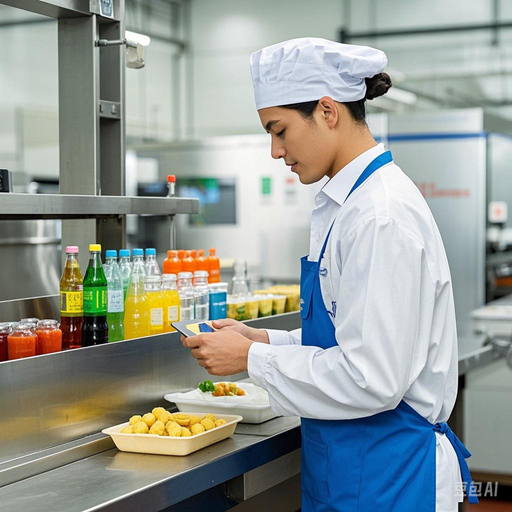Choosing the Right Attendance System for Food and Beverage Production

For food and beverage production companies, workforce management is one of the most critical aspects of maintaining operational efficiency. Employee attendance impacts productivity, labor costs, compliance, and ultimately, profit margins. An effective attendance system tailored to the unique needs of food and beverage manufacturing can streamline operations, enhance accuracy, and improve overall performance.
In this article, we will explore the key factors food and beverage companies should consider when selecting an attendance system. We'll also evaluate the most suitable options available in the market and provide actionable insights to guide your decision-making process. Additionally, we'll discuss implementation best practices and offer a detailed checklist to help you choose the right vendor.
Why Attendance Systems Matter in Food and Beverage Production
Attendance tracking is more than just a way to monitor time worked; it plays a crucial role in the success of food and beverage manufacturers. Here’s why:
- Productivity: Absenteeism or tardiness can disrupt production schedules, leading to delays and reduced output.
- Labor Cost Management: Accurate attendance tracking ensures employees are paid correctly, reducing payroll errors and unnecessary overtime expenses.
- Compliance: Food and beverage manufacturers must adhere to labor laws and industry regulations, such as mandated breaks, overtime limits, and safety standards.
- Operational Insights: Attendance data can reveal patterns of absenteeism, overtime trends, and workforce inefficiencies, helping management make informed decisions.
Given the high stakes, investing in the right attendance system is essential to maintaining a competitive edge in the food and beverage sector.
Key Factors to Consider When Choosing an Attendance System
The food and beverage industry presents unique challenges that influence the type of attendance system required. Here are the most important factors to keep in mind:
1. Hygiene and Cleanliness
Maintaining strict hygiene standards is critical in food production facilities. The attendance system must be easy to sanitize and designed to prevent cross-contamination. Devices exposed to employees’ hands or other physical contact should feature antimicrobial coatings and sealed designs to withstand regular cleaning.
2. Work Environment Durability
Production areas in food and beverage facilities often face harsh conditions, including high humidity, extreme temperatures, and wet or dusty environments. The attendance system must be robust enough to function reliably under these circumstances without frequent maintenance.
3. Mobility
Large production facilities and multiple worksites require flexible attendance solutions. Employees may need to clock in and out from multiple locations, such as different production zones, locker rooms, or outdoor areas. Mobile-friendly systems or those with distributed clocking options are ideal for these environments.
4. Connectivity and Real-Time Data
Real-time data capture is essential for effective workforce management. However, production sites often have limited WiFi or cellular connectivity in certain areas. The attendance system must have offline functionality and the ability to sync data seamlessly when connectivity is restored.
5. Compliance with Labor Laws
Food and beverage manufacturers must comply with labor laws, which may require tracking hours worked, breaks taken, and overtime hours. The attendance system should have built-in compliance features to ensure accurate record-keeping and avoid penalties.
6. Budget
While advanced systems offer robust features, cost is always a consideration. The system must provide value without excessive upfront hardware costs or recurring fees. Scalability is another factor—your chosen solution should grow with your business.
Types of Attendance Systems for Food and Beverage Production
Several types of attendance systems are well-suited for the unique requirements of food and beverage manufacturers. Below, we review the most practical options, along with their pros and cons.
1. Biometric Time Clocks
Biometric systems use fingerprint, palm, or facial recognition to capture attendance. These systems reduce the risk of "buddy punching" (when one employee clocks in for another) and are designed for high accuracy. Models tailored for food production environments feature antimicrobial surfaces and sealed designs.
- Pros:
- Hygienic and easy to sanitize.
- Prevents employee misuse.
- Mobile options are available.
- Cons:
- High upfront cost for hardware.
- Fixed devices may not be ideal for large facilities.
- Some employees may resist biometric scanning due to privacy concerns.
2. Proximity Card Readers
Proximity card readers use ID or smart cards that employees tap to clock in and out. The data is automatically synced to a cloud-based platform for easy tracking and reporting.
- Pros:
- Cost-effective and scalable.
- Less physical contact compared to biometric systems.
- Can be deployed at multiple locations simultaneously.
- Cons:
- Cards can be lost, shared, or misused.
- Fixed readers may face connectivity issues in remote areas.
3. Mobile Apps
Mobile apps enable employees to clock in and out using GPS-enabled devices. These apps are ideal for companies with distributed teams or facilities, as they allow real-time attendance tracking from any location.
- Pros:
- Highly flexible and mobile.
- Low upfront costs.
- Works offline and syncs data when reconnected.
- Cons:
- BYOD (Bring Your Own Device) policies can introduce security risks.
- Small screens may not be ideal for extensive data entry.
Recommended Approach: A Hybrid Solution
For most food and beverage companies, a hybrid attendance system offers the best balance of features and flexibility. Here’s how it works:
- Biometric Time Clocks: Install fixed biometric scanners at key locations such as entrances, locker rooms, and production floors. These serve as the primary clocking method for employees.
- Mobile Apps: Equip supervisors or foremen with mobile apps to record attendance for employees working in remote areas or across multiple zones.
- Centralized Platform: Integrate both systems into a unified platform for centralized data management, reporting, and payroll integration.
Conclusion
An effective attendance system is essential for food and beverage manufacturers looking to optimize labor management, maintain compliance, and control costs. By understanding your specific operational needs, you can select a solution that balances hygiene, durability, mobility, and cost-effectiveness.